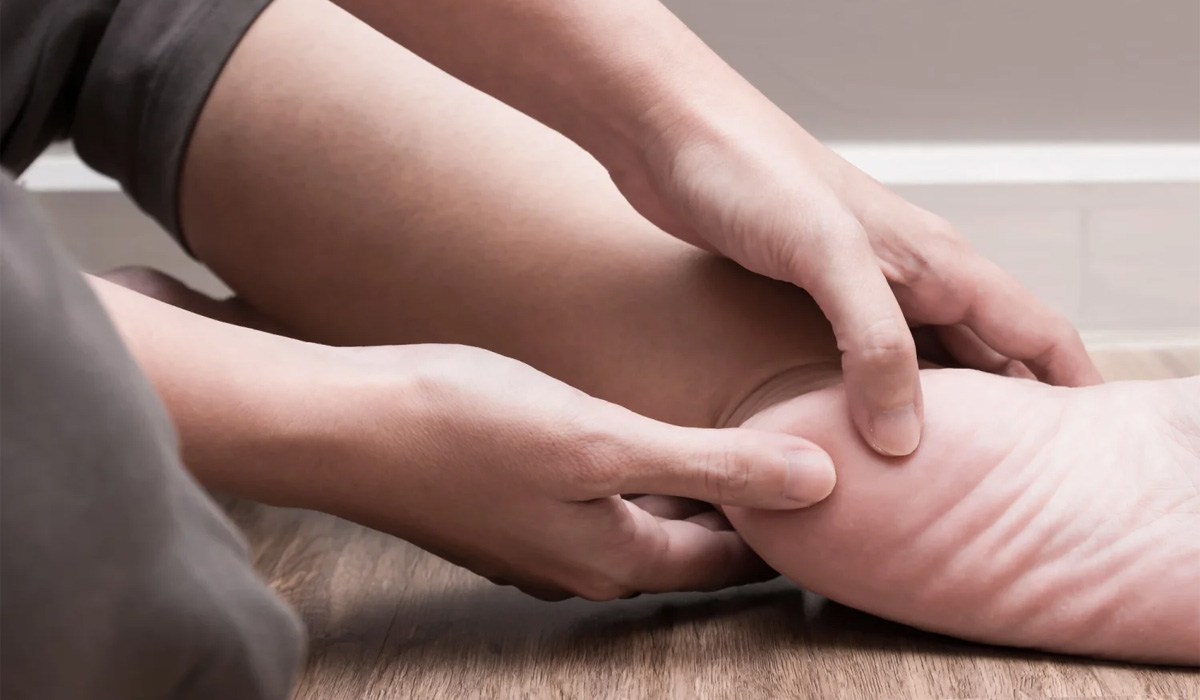What is Plantar Fasciitis?
Plantar fasciitis is a prevalent foot condition characterised by irritation of the plantar fascia insertion. The plantar fascia is a thick band of tissue running along the bottom of the foot, connecting the heel bone to the toes. It commonly causes stabbing pain on the inside of the heel, particularly when taking those first steps in the morning or after prolonged periods of rest.
Causes and Risk Factors:
- Overuse: Repetitive activities, such as long-distance running or standing for extended periods, can strain the plantar fascia.
- Foot Mechanics: Abnormal foot arches (flat feet or high arches), improper footwear, or sudden changes in physical activity can contribute.
- Age and Weight: Being overweight or between the ages of 40 and 60 increases the likelihood of developing plantar fasciitis.
Symptoms:
- Heel Pain: Typically, pain is felt near the heel and may radiate along the arch of the foot.
- Morning Discomfort: Intense pain often occurs with the first steps after waking up or following periods of inactivity.
- Increased Pain with Activity: Activities like walking or running can exacerbate the pain.
Physiotherapy’s Role in Managing Plantar Fasciitis:
- Accurate Diagnosis: A thorough assessment by a physiotherapist is crucial to confirm plantar fasciitis and rule out other potential causes of foot pain.
- Tailored Exercise Programs: Physiotherapists design specific stretching and strengthening exercises to alleviate pain and improve foot function. A sound strengthening program is an integral part of good long term management of Plantar fascia cases.
- Manual Therapy: Techniques like massage, foot mobilistions, or myofascial release aid in reducing muscle tension and can help reduce symptoms.
- Gait Analysis and Footwear Recommendations: Assessing walking patterns helps identify issues that might contribute to the condition, and recommending appropriate footwear or orthotics can alleviate stress on the plantar fascia.
- Activity Modification: Guidance on modifying activities to prevent exacerbation of symptoms and facilitate healing.
- Pain Management Techniques: Implementing modalities like ice & taping for pain relief.
Plantar fasciitis can be a persistent and difficult condition to treat, but with the right guidance and physiotherapy interventions, its impact can be mitigated. As an experienced physiotherapist, I’ve witnessed the transformative effects of tailored treatments that focus on alleviating pain, improving mobility, and restoring function for individuals affected by this condition.
Remember, early intervention and a comprehensive treatment plan are key to managing and overcoming plantar fasciitis. If you’re experiencing persistent foot pain, seeking professional advice can make a significant difference in your journey toward recovery and pain-free mobility.




